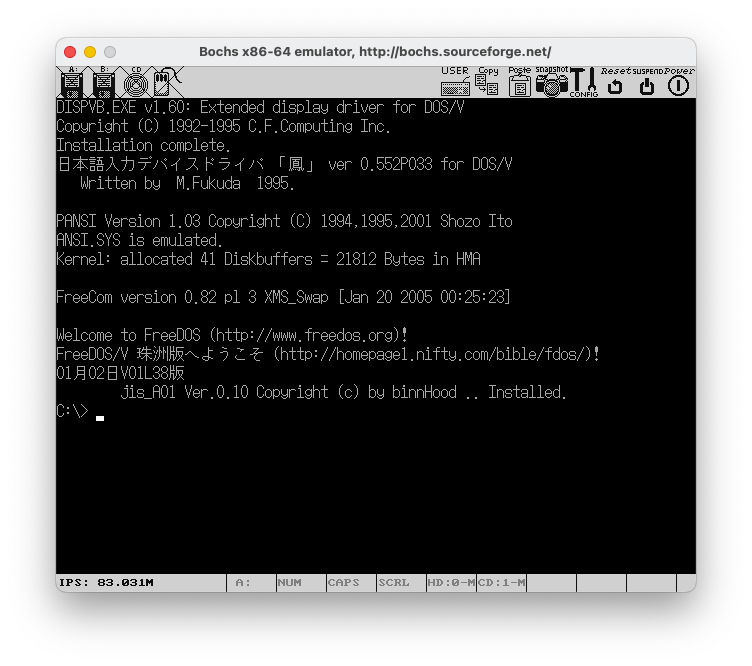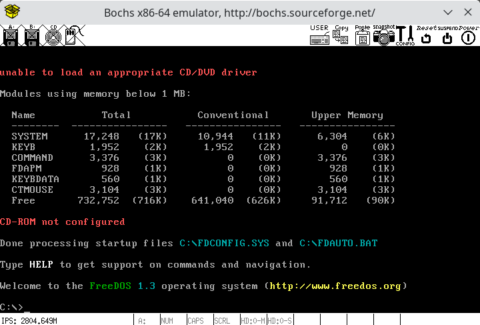結局,dosemu以外では動きませんでした.
なかなかFreeDOS/VをHDDにインストールできませんでした.FreeDOS/V 1.38のフロッピーイメージから起動して,空のディスクイメージファイルをHDSETUP.BATでフォーマットしようとしてもエラーが出ます.
そこで,FreeDOSの最新版(英語版)を当該のディスクイメージにインストールして,HDDイメージからブートできることを確認したうえで,FreeDOS/Vのフロッピーからブートして,
FORMAT C: /Sを実行したらエラーなくフォーマットできましたので,このあと手作業でFreeDOS/Vのファイルをコピーしました.
そうしたら,KVM/QEMUでもBochsでもこのディスクイメージからブートできるようになりました.
しかし,Control + Space を押しても鳳が起動しません.

KVM/QEMUでも同じです.
一方dosemuで起動後に Control + Spaceを押すと,

このように,右下の隅に “鳳” の文字が表示され,単漢入力モードになります.
残念ながらFreeDOS/V + 鳳をインストールしても,dosemu以外(Bochs, KVM/QEMU)では単漢入力ができない,というのが現時点での結論です.





